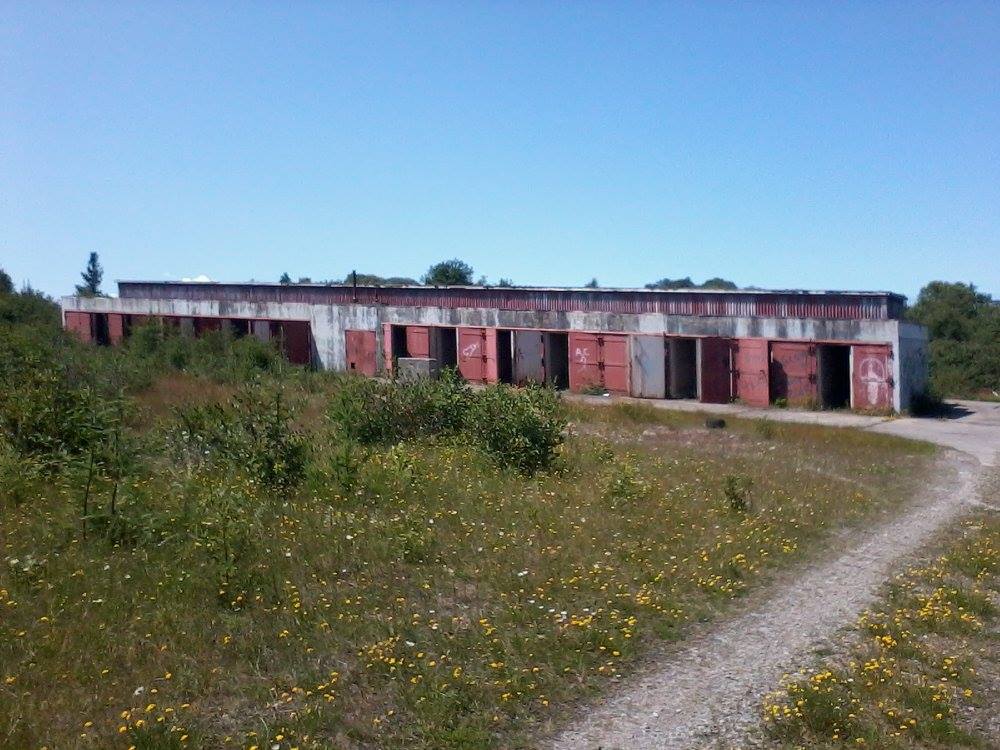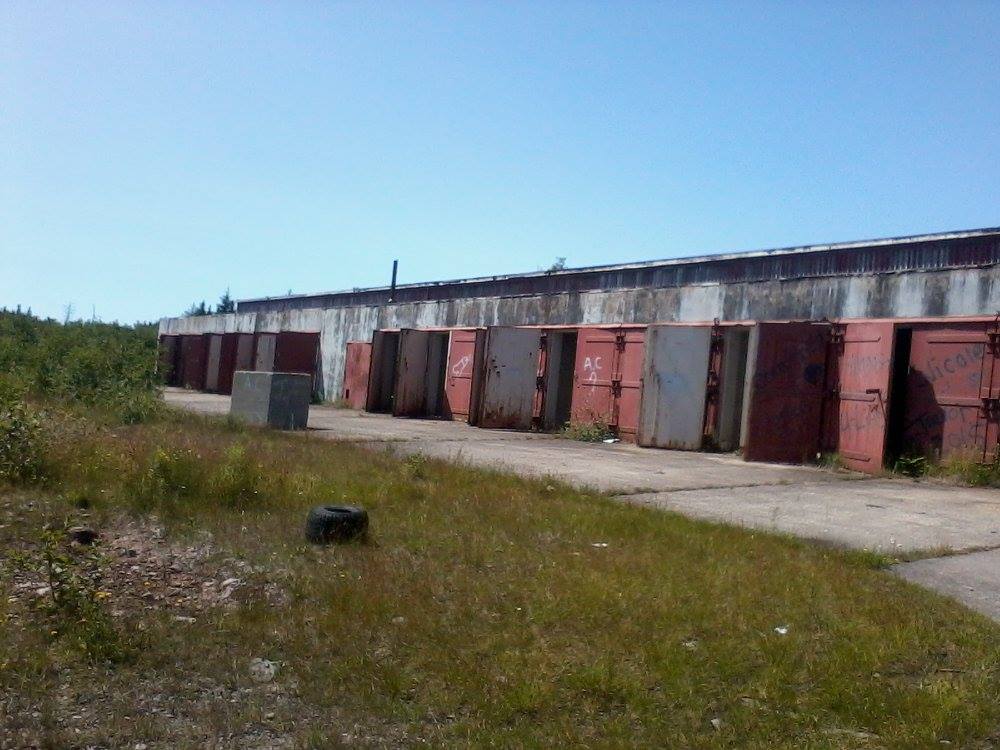Earnest Harmon Air Force Base was one such base.
Stephenville Newfoundland was chosen by the USAF for "Harmon Field" as it was initially called; provided to the United Stated from the British Government by way of a lease, it was operational in August 1943 as part of the second world war effort. In 1947 it changed names to Ernest Harmon Air Force Base. In July 1953 the 61st Flight Interceptor Squadron (FIS) moved in, who flew the Northrop F-89D Scorpion. During this time, nuclear weapons (bombs, specifically) were being deployed by the Strategic Air Command for use in both offensive roles. Ernest Harmon Air Force Base was primarily a base for KC-97 refuelling planes to take off from and refuel American bombers headed over to Russia; they had fighters deployed there to protect the base, and their refuelling aircraft. The Northrop F-89J Scorpion was the first plane to fire a live Genie air-to-air nuclear rocket on the 19th pf July 1957, but no J variants were ever deployed there, that I am aware of. According to Wikipedia the AIR-2 Genie was operation in the American nuclear stockpile from 1958–85. In October of 1957 the F-89D fighters moved out, and F-102A fighters moved in from the 323rd Flight Interceptor Squadron. F-102As are nuclear AIR-2 "Genie"-capable weapon platforms, and the Canadian government agreed that US Forces could fire nuclear air-to-air missiles as of June 1958; but no agreement had yet been made to allow the deployment of the rockets to American bases on the Canadian side of the border.
It was only in 1964 that the agreements were in place to allow the AIM-26 Falcon nuclear short range IR air-to-air missile to be stored at Goose Air Base and Earnest Harmon Air Force Base; but these agreements were specifically to allow *storage* of nuclear air-to-air weapons, and the USAF was quite masterful in it's use of legalese. Transient or temporary storage of nuclear weapons could have already been allowed , and rotations of US bombers were already rotating in to and out of Goose Air Base. Clearly you can't have a wing of B-47 bombers waiting on alert to go bomb something is you don't have any bombs there, right? If similar terminology tricks were being used for Falcon and Genie deployments to Earnest Harmon AFB as were being used at Goose AB, I can't be certain, but I do know the buildings that could store the missiles safely were built at Goose Air Base in 1958. Officially the United States deployed nuclear Falcon missiles to their bases in Canada in July 1965 and those same missiles left Canada in December 1966. Coincidentally, Earnest Harmon AFB closed toward the end of 1966. Were the AIM-26 Falcons being stored at Earnest Harmon AFB, not Goose AB? John Clearwater suggests exactly that in his book US Nuclear Weapons in Canada around Page 182. The storage facilities at Goose Air Base were built too close together for the storage specifications of the time, so only Earnest Harmon AFB received AIM-26 Falcon missiles at their approved storage magazine.
So where was this nuclear weapons storage magazine at Earnest Harmon Air Force Base?
By studying the design of Strategic Air Command bases globally, built in the 1950s, using now readily available satellite imagery, similarities quickly appear because the bases were all designed to conform to the same construction standards of the time. Goose Air Base's 1954 Weapons Storage Area was designed to store nuclear bombs, not missiles, and the design of the facility shows that fact. Goose Air Base's 1958 storage was to accommodate the ADC, who were supposed to get Genie or Falcon nuclear air-to-air weapons to protect the base, but as I mentioned, they failed their site inspection because their buildings were too close together.
But what about Ernest Harmon?
The only building at Ernest Harmon AFB that looks like a nuclear ammunition storage magazine matches the 1958 construction at Goose AB, but there is only one storage magazine, not three. This can be easily explained if we figure Ernest Harmon was a smaller base than Goose, and Goose could have been where they intended to store most of the weapons and maintain them; Ernest Harmon was potentially where they would have fully assembled missiles deployed, and only enough for the fighters on alert, perhaps. While the buildings at Goose AB were too close together, there was only one, seemingly, at Earnest Harmon Air Force Base; so there was no other building to be close to.
Here are a several pictures of what I believe was the AIM-26 (nuclear) Falcon air-to-air storage building, sited in October 1964, constructed immediately after, and fully operational in the summer of 1965. These following pictures were taken in the Summer of 2016; a big thank you to H. Simon for taking the time to check out the building in the bush!
First we have the front and back angles of the building; each of the cubicles would have been for a limited number of components of the missiles (fuses, rocket motors, warheads, etc), or potentially whole assembled missiles. Since I can't find any nearby missile assembly building I suspect the missiles were assembled at Goose Air Base them flown over and stored in this building.
 |
| Photo Credit: H Simon - August 3 2016 |
 |
| Photo Credit: H Simon - August 3 2016 |
 |
| Photo Credit: H Simon - August 3 2016 |
 |
| Photo Credit: H Simon - August 3 2016 |
 |
| Photo Credit: H Simon - August 3 2016 |
 |
| Photo Credit: H Simon - August 3 2016 |
The following is the inside of the machine room of the building where a boiler was located to heat the building with radiant heat.
 |
| Photo Credit: H Simon - August 3 2016 |
The following are pictures of the markings on the thick steel blast doors; similar to the labeling at Goose Air Base, these specify a maximum of 1,000 or 2,000 lbs (gross) of Category 9 and 10 explosives. Unfortunately I don't know what that means.
 |
| Photo Credit: H Simon - August 3 2016 |
 |
| Photo Credit: H Simon - August 3 2016 |
 |
| Photo Credit: H Simon - August 3 2016 |
 |
| Department of the Air Force 1957 Master Plan Showing future expansion plans hat never transpired. Original Here |
Satellite imagery of the former base as it stands today.
